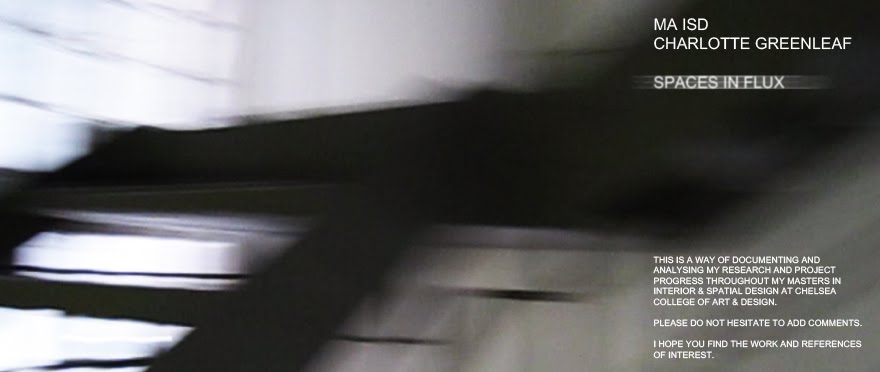As part of my research into designing my own device to record space, it seemed relevant and logical to study various films, and to consider how certain film shots and camera effects have been captured. Many of these particular film sequences have been discussed in the reading I have covered in this research area.
Vertigo Effect/Dolly Zoom: This effect is achieved through the combined use of the zoom of a camera lens and the movement/dollying of the camera towards or away from the subject at the same time. The subject remains the same size throughout, whilst the background perspective appears to be changing.
Leon, Luc Besson (see clip - opening minute)
During the first minute of Leon, Besson takes the viewer on a journey. Commencing with an aerial shot, panning over the Hudson and a forest. As the camera progresses it turns vertically revealing the New York skyline, and the identity of the forest as Central Park is understood. The camera then jumps to moving down a street in the city, the camera orientation becomes that of the vision of a vehicle driver, the non-mounted shaky camera effect emphasises the motion. The camera cuts again, further into the city and gradually pans upwards when a banner comes into view, following the eye of a supposed driver. The camera then zooms into the darkness of a restaurant.


Powaqqatsi, Godfrey Reggio (see clip - 4.57-6.12)
Powaqqatsi translates 'life in transition' or 'parasitic way of life'. The film portrays the human cost of progress, through the lives of those in third world countries consumed by the impact of industrialization. I found this clip particularly powerful, due to the gradual rotation of the camera which spirals an upward view of buildings and a power line to emphasise and juxtapose the following manually rotated ferris wheel shot. In this shot the camera gradually pans downwards over the motion of the ferris wheel and finally reveals the power behind the mechanism.
Russian Ark, Alexander Sokurov
This film was shot through one fluid continuous 96 minute Steadicam sequence, during which the camera passes through 33 rooms of the State Hermitage Museum, St. Petersburg, Russia. It supposedly took four attempts to film the shot with the first three being interrupted by technical glitches. The film plays as one continuous unedited sequence and is the longest in film history.
The Shining, Stanley Kubrick
'A portable Steadicam photographed the amazing chase in the maze. In the sequence where Danny goes backwards, stepping in his own footprints in order to mislead the monster, the cameraman had to wear special stilts with Danny's shoes nailed to the bottoms and step exactly into the boy's tracks. The spectator, however, experiences yet another maze, that of the experiential maze tracked by Kubrick's cinematic language and Garrett Brown's brilliant Steadicam.'
-The Architecture of Image: Existential Space in Cinema, Juhani Pallasmaa, p113


No comments:
Post a Comment